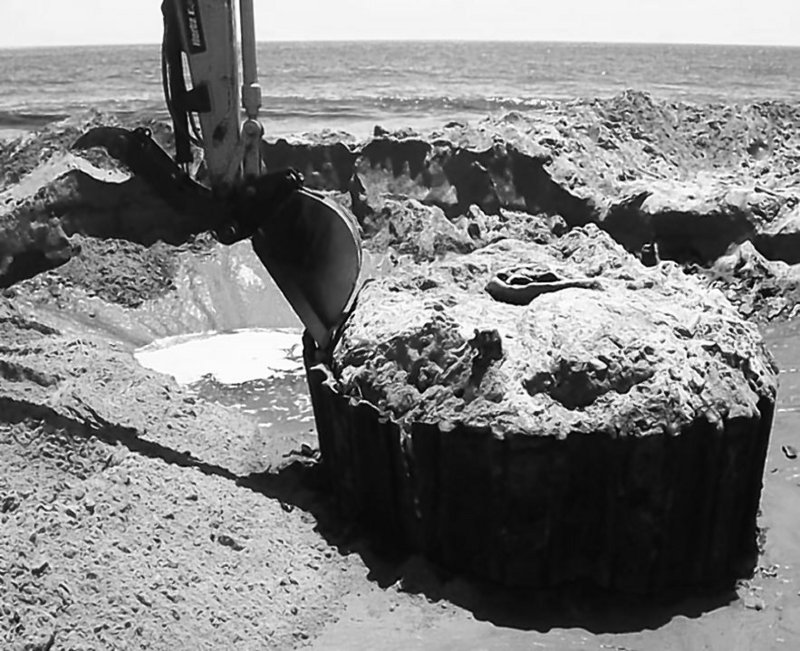Leading environmental groups and a U.S. senator on Wednesday called on the government to pay closer attention to more than 27,000 abandoned oil and gas wells in the Gulf of Mexico and take action to keep them from leaking even more crude into water already tainted by the massive BP spill.
The calls for action follow an Associated Press investigation that found federal regulators do not typically inspect plugging of these offshore wells or monitor for leaks. Yet tens of thousands of oil and gas wells are improperly plugged on land, and abandoned wells have sometimes leaked offshore, regulators say.
Melanie Duchin, a spokeswoman with Greenpeace, said she was “shell-shocked” by the AP report.
Of 50,000 wells drilled over the past six decades in the Gulf, 23,500 have been permanently abandoned. Another 3,500 are classified by federal regulators as “temporarily abandoned,” but some have been left that way since the 1950s, without the full safeguards of permanent abandonment.
Petroleum engineers say that even in properly sealed wells, the cement plugs can fail over the decades and the metal casing that lines the wells can rust. Even depleted production wells can repressurize over time and spill oil if their seals fail.
Regulators at the Minerals Management Service — recently renamed the Bureau of Ocean Energy Management, Regulation and Enforcement — have routinely been accepting industry reports on well closures without inspecting the work. And no one has been checking wells abandoned for years.
In its investigation, the AP found a series of warnings. For instance, the General Accountability Office, which investigates for Congress, warned in 1994 that leaks from offshore abandoned wells could cause an “environmental disaster.” The report stated: “MMS does not have an overall inspection strategy for targeting its limited resources to ensuring that wells are properly plugged and abandoned.”
The GAO report suggested MMS set up an inspection program, but the agency never did.
According to a 2001 study commissioned by MMS, agency officials were “concerned that some abandoned oil wells in the Gulf may be leaking crude oil.” But nothing came of it.
The oil gushing from a BP PLC well since an exploratory oil rig exploded April 20 is an uncomfortable reminder of the potential for leaking at abandoned wells. The well was being prepared for temporary abandonment when it blew, setting off one of the worst environmental disasters in U.S. history.
Wells are abandoned temporarily for a variety of reasons. In the case of the BP spill, the well was being capped until a later production phase. Oil companies also may temporarily abandon wells as they re-evaluate their potential or develop a plan to overcome a drilling problem or damage from a storm.
Regulations for temporarily abandoned wells require oil companies to present plans to reuse or permanently plug such wells within a year — and then conduct an annual review — though the AP found the rules have allowed wells to remain “temporarily” abandoned forever.
Sen. Mark Udall, D-Colo., sent a letter Wednesday to Interior Secretary Ken Salazar asking whether regulators have authority to inspect abandoned wells. He said regulators may need to check industry paperwork more carefully or inspect the work.
Environmental activists called for the government to study the extent of leaking, conduct inspections and monitor these wells over the years.
After repeated requests, federal regulators acknowledged Tuesday that some abandoned wells have leaked in the past. However, a government petroleum engineer, Eric Kazanis, told the AP that abandoned wells aren’t considered a risk and aren’t “supposed to leak.”
Oil companies say they plug correctly, and that seals should last virtually forever.
Send questions/comments to the editors.



Comments are no longer available on this story